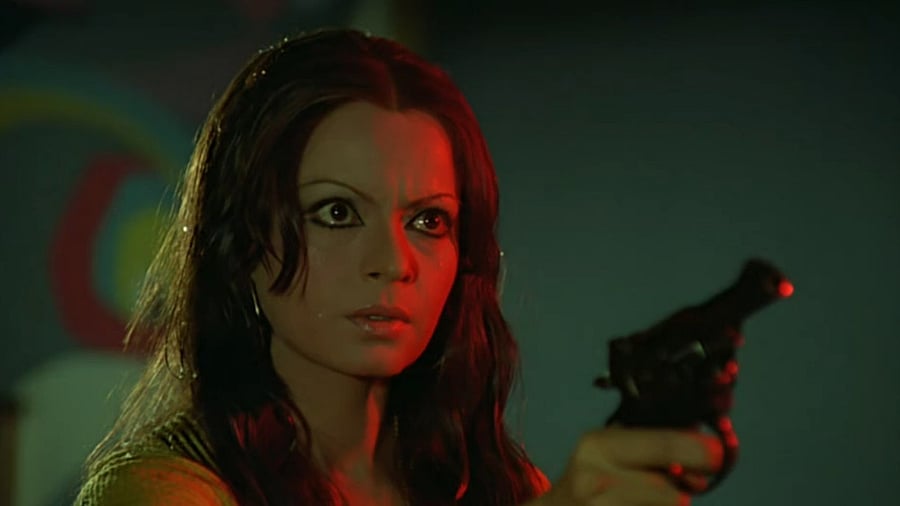
Bollywood spy thrillers today are sleekly mounted, big-ticket, glamorous fare backed by premier studios and stars. Over the last decade, we’ve seen 'Ek Tha Tiger', 'Baby' and 'Raazi' do well. 'Pathaan''s gargantuan success has bolstered the genre’s position in contemporary Hindi cinema. Yash Raj Films’ Spyverse — the multi-star franchise of spy actioners — is generating great interest. Their next offering, 'Tiger 3' is slated to release towards year end. Recently, reports of Alia Bhatt headlining the franchise’s first female-led spy film made rounds.
Long before the biggies got involved, spy thrillers had been the pet subject of B-grade Hindi cinema. Filmmakers including genre experts NA Ansari and Mohammed Hussain cranked out stories about sassy agents foiling strange terror attacks, rescuing abducted scientists, and recovering stolen national secrets — aka ‘faarmulaa’ in Bolly spyspeak. Despite the clichés, lack of scope, sophistication, and often logic, these films were hugely entertaining. Ansari’s 'Zindagi Aur Maut' (1965), Hussain’s 'CID 909' (1967) and BK Adarsh’s 'Spy in Rome' (1968) are great guilty pleasures, while Deepak Bahry’s 'Agent Vinod' (1977) and Ravikant Nagaich’s Surakksha (1979) have become cult classics.
Inspired by the Bond series and the Eurospy films of the '60s, the trend of spy films in Hindi cinema, too, began around that time and fizzled out by the '80s. These films thrived on standard plot-lines, familiar tropes, and homespun production values. Almost every spy flick has a cocky secret agent, outlandish villains, temptresses, shady henchmen, cool gadgets, schlocky effects, and fun disguises.
The contemporary spy films are attentive to the mechanics of intel ops. There’s research and protocol. But their predecessors had no such worry. No time was wasted on authenticity or specifics. Undercover CID officers, CBI agents – anyone could become a spy. The secret service headquarter would typically be a kitschy set-up with colourful, blinking-beeping gizmos that resembled school science models. The brave and canny agents flew cars, fought locust attacks, retrieved microfilms from postage stamps and fake nails, and neutralised baddies with a mere paintbrush.
Bond 007’s influence on our desi agents was right down to the nomenclature. They’d invariably have codenames like Agent 707 ('Khilari', 1968; 'Inspector', 1970), Agent 077 ('Golden Eyes', ‘68) or even 'Bond 303' (1985). They were up against enemy states, traitorous crime syndicates, and megalomaniacs harbouring crazy ideas of world domination. Rescuing abducted scientists and guarding the all-important ‘faarmulaa’ was a task most
agents had to fulfil. 'CID 909', 'Puraskar' (1970), 'Spy in Rome', 'Agent Vinod' each have spies looking for a missing scientist. The trope even made it to 2023 in 'Pathaan'’s storyline where the villain kidnaps a renowned scientist to develop a deadly virus.
It wasn’t like mainstream filmmakers back then didn’t attempt the genre. The hostile India-China relations post the 1962 war prompted a few ambitious projects like Joy Mukherjee’s 'Humsaya' (1968), Gemini Studios’ 'Shatranj' (‘69) and Ramanand Sagar’s big-budget hit 'Ankhen' (1968) – credited for bringing a certain sophistication to the genre. Rajshri Productions backed a small film with a little-known actor. 'Agent Vinod' starring Mahendra Sandhu was deliciously campy and unapologetically cheeky. It incorporated every Bond cliché — Casanova spy armed with ingenious gadgets and a sly smile, an intriguing villain, amazing car chase stunts, and attractive women. The film became an unexpected success, acquired cult status, and inspired the name of Sriram Raghavan’s 2012 spy saga.
Regardless of the scope and budget he operated on, Ravikant Nagaich’s spy films had a distinct b-grade campiness to them. Gaudy sets, kooky props, and fanciful villains with their outrageous plans against humanity like devising contaminated grains that’d turn people into zombies. The director fashioned two Bond-like desi spies — Special agent 116 and Gunmaster G-9. Jeetendra played the flirtatious spy fighting foreign saboteurs in the 116 series starting with 'Farz' (1967) followed by 'Raksha' (1982) and The Gold Medal (1984). In between, Dharmendra took over the role in Keemat (1973) and frankly made a more dashing operative. But it was Mithun Chakraborty’s Gunmaster G-9, the super agent charmer in Surakksha that became Nagaich’s most celebrated success with a dedicated fanbase. Its sequel Wardat wasn’t as well-received but is an unbeatable timepass.
Barring Ankhen, where the film’s secret agent heroine is on an equal footing with the men, the job of women in most of these films was being an arm candy or a damsel in distress. Sometimes the makers would add a token daredevil female character who’s part of the action. 'Anjam'’s (1968) leading lady is an undercover CBI officer tracking an anti-national organisation. Agent Vinod’s tenacious operative Zarina is brilliant at intelligence gathering, withstands torture from enemies, and perishes on duty.
Fearless Nadia’s 'Khilari' would be the most notable exception for its strong female players, including the film’s joyfully evil antagonist. Largely forgotten, it’s one of the last projects of the 1930-40s feminist action star. Nadia plays an elite agent who teams up with a young male colleague and two competent women to take down Golden Dragon – a fierce, fabulously dressed criminal mastermind. Beyond the formulaic plot, sloppy aesthetics and didactic dialogues, Khilari’s slight subversion deserves credit. Women being savvy, fun, and significant to the story — doesn’t happen very often in our films. Nearly 60 at the time, Nadia was no longer the lithe action legend she used to be. But as a last hurrah to her glory days, the actress sportingly does the heavy-lifting here — stunts, comedy bits, and her famed dialoguebaazi – and remains as inspiring as ever.